The flag of the Democratic Republic of Congo, adopted in its current form in 2006, has been designed to proudly represent the nation’s identity and unity. This is despite the country’s complex, often turbulent history.
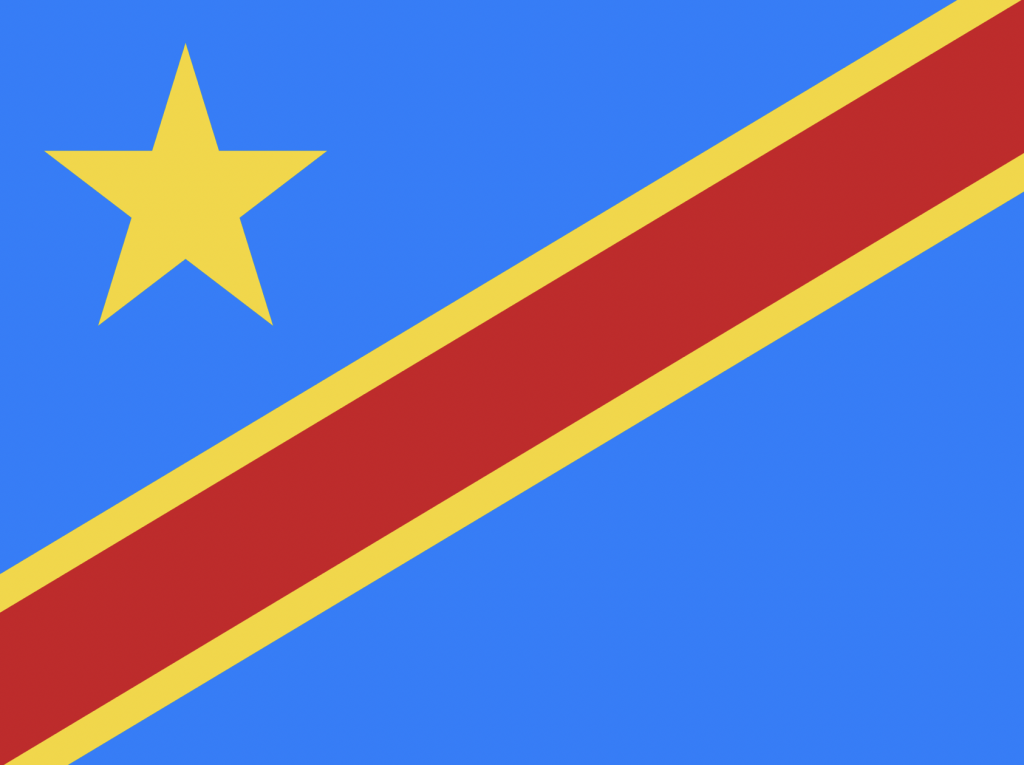
The boldness of the DRC flag stands out on the international stage, given its striking colours and as one of the few flags to feature a diagonal stripe.
Designing the primary national symbol for the second-largest country in Africa — home to over 100 million people and more than 250 ethnic groups — has been no small feat. This complexity helps explain why the DRC’s flag has undergone five significant changes since its independence in 1960.
Here’s a brief history of how the DRC’s modern flag came into being, the flags used before the country achieved self-governance, and what the flag represents today.
Table of Contents
Flags used in the DRC before independence:
Before achieving independence in 1960, the Congo was controlled as a Belgian colony yet was the personal colony and property of Belgian King Leopold II from 1885 to 1908.
Leopold II is one of the few historical figures about whom it is difficult to say anything positive, except perhaps that he commissioned some nice buildings in his homeland. His reign over the Congo Free State is notorious, with that regime responsible for killing between 1 and 15 million people.
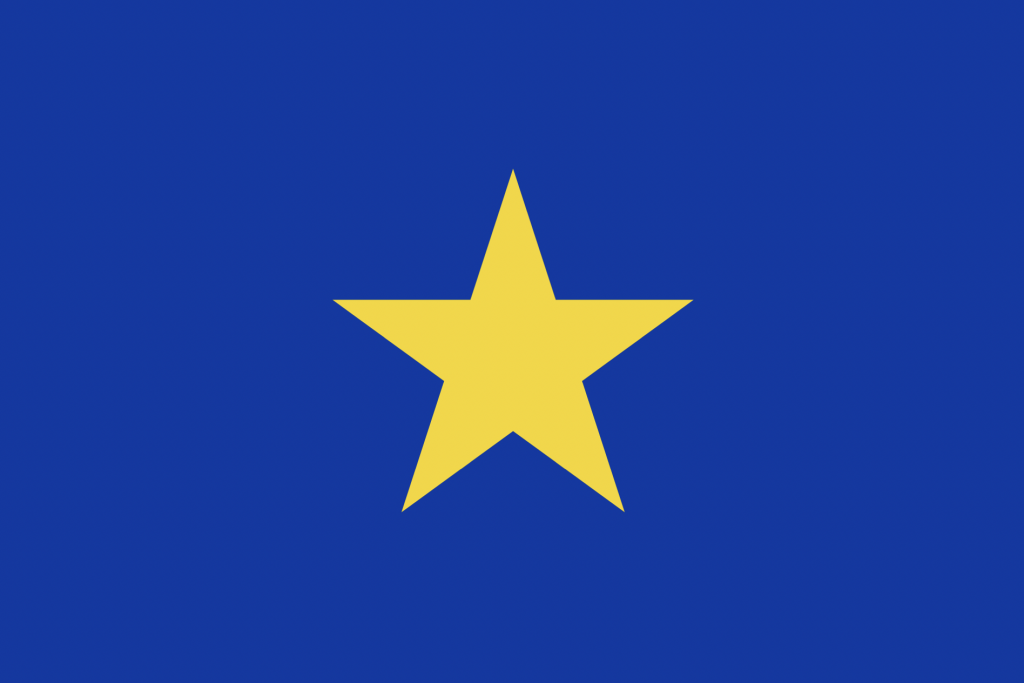
While the standard Belgian Flag was flown from government buildings – when it was both Leopold’s colony and a possession of Belgium proper – a separate colonial flag was also used. This design featured a large, golden star on a dark blue background.
Even by the standards of European colonialism, the explanation of this design is surprisingly racist. The isolated golden star was to represent a shining light in an otherwise “dark continent,” although another interpretation stated that the star symbolized the hopes for a better future and guidance for the Congolese people.
The adoption of a national flag:
Upon independence on June 30, 1960, the new flag of the Democratic Republic of Congo kept an adapted version of the colonial-era flag. In addition to the lone star in the centre, six smaller stars were added to the left hoist. They represented the country’s six provinces, which became a problem when the young nation was reorganized in 1963 to have more than six provinces.
Therefore, a new flag was introduced at this point, which remains very similar to the one used today. The design kept the blue background, but the golden star was moved to the top left. A red diagonal with a yellow border was also added.
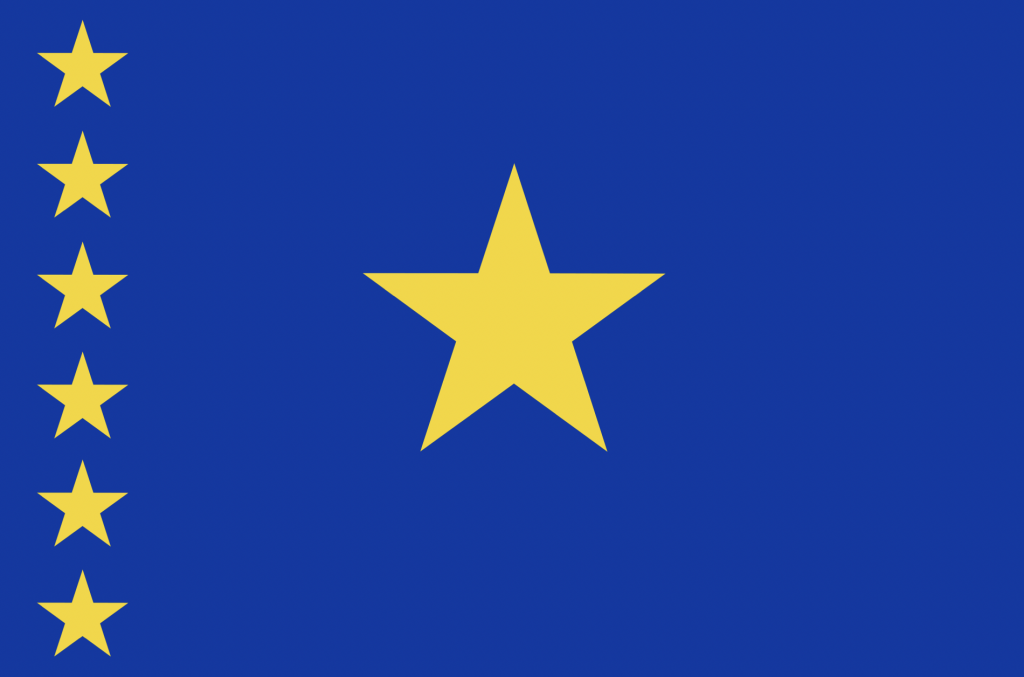
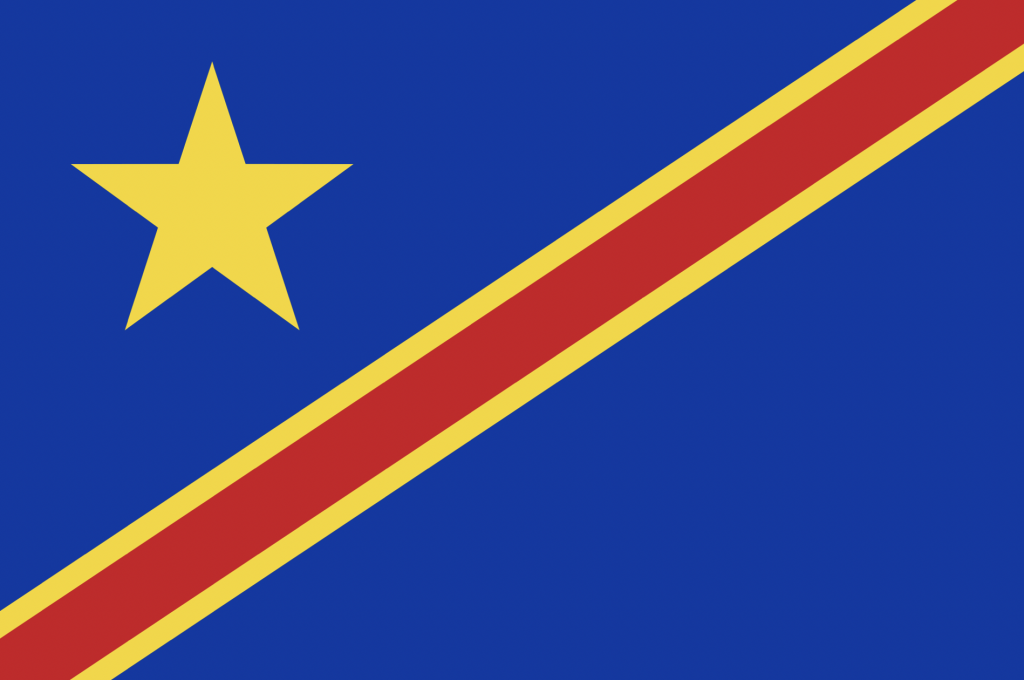
This initial version of the national flag didn’t last long. In 1965, Mobutu Sese Seko — one of the few figures recognizable globally by just his first name — seized power. He launched the authenticité campaign, aimed at erasing colonial influences, despite his continued political alignment with the West.
In 1971, this meant changing the national flag again, along with renaming the country “Zaire.” A completely new design was introduced, which also happened to be the banner of Mobutu’s political party.
Unsurprisingly, the flag of Zaire incorporated the pan-African colours of green, red, and yellow. The distinctive “flaming torch” in the centre was the ruling party symbol, supposed to represent the progress of the continent.
In terms of the colours, green represented hope and fertile land, while yellow was for Zaire’s bountiful natural resources. Red symbolized the blood shed for independence, and the symbol was in a disk to represent the unity of Zaire’s people.
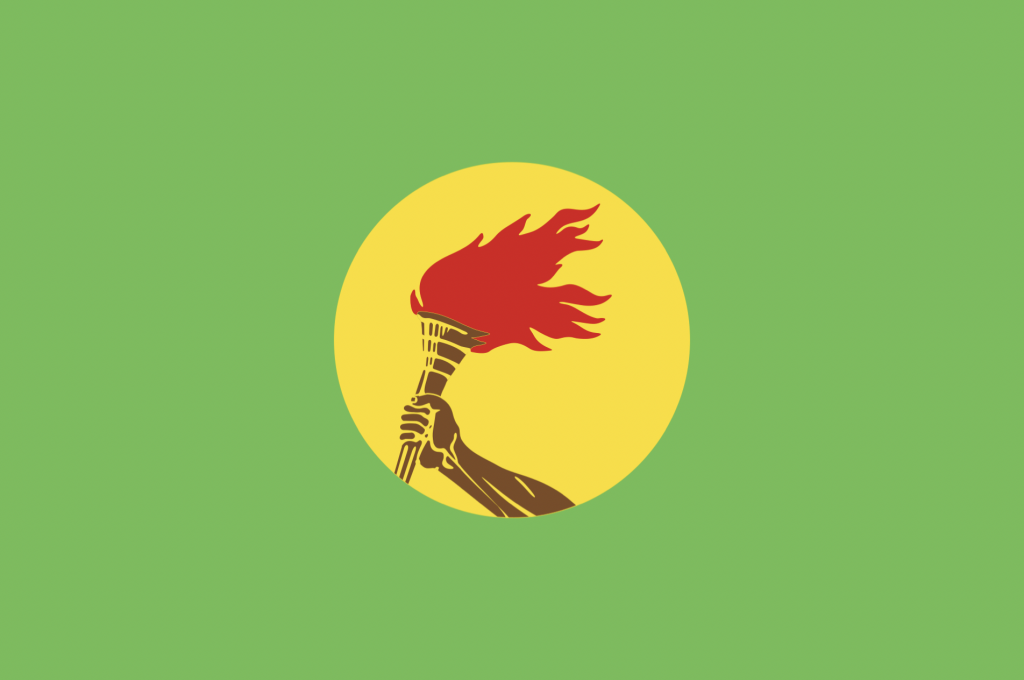
Mobutu’s rule came to a dramatic end in 1997, and the flag reverted back to the six-star design used during the first years of the DRC’s independence. This was despite the country now having eight provinces, rather than six.
Finally, in 2006, the current flag was officially adopted, marking a return to the design used from 1963 to 1971. After enduring Mobutu’s dictatorship and the devastation of the First and Second Congo Wars, this re-adoption symbolized a revival of the hope that the Congo held at its birth as a nation. The updated design carries a deeper, more accurate reflection of the country’s tumultuous journey and aspirations for peace and stability.
The symbolism of the current DRC flag:
The flag of the Democratic Republic of the Congo has a rich and appropriate symbolism. These are designed to reflect the country’s optimism and aspirations, as well as a push for unity after recent challenges.
- Blue Field: The light blue background symbolizes peace, which has been a long-standing hope for the Congolese people given the country’s tumultuous history.
- Red Stripe: The red stripe represents the blood shed by those who fought for the DRC’s independence, and the ongoing struggle for a peaceful, unified nation.
- Yellow Star: The large yellow star is a symbol of hope and a bright future for the Congolese people. While taken from earlier flags, its symbolism has been updated to reflect the nation’s guiding principles today.
- Yellow Borders: The yellow lines surrounding the red stripe stand for prosperity and the country’s wealth in natural resources. The DRC is known for its rich mineral deposits – for better or worse, these have played a significant role in its history.
How can I see the DRC flag for myself?
Thankfully, we offers several opportunities to explore all parts of the Democratic Republic of Congo!
Firstly, our East Africa Combo tour includes visiting the eastern DRC, as well as neighbouring Rwanda, Burundi, and Uganda. This tour provides an in-depth experience of the region’s culture, history, and natural beauty.
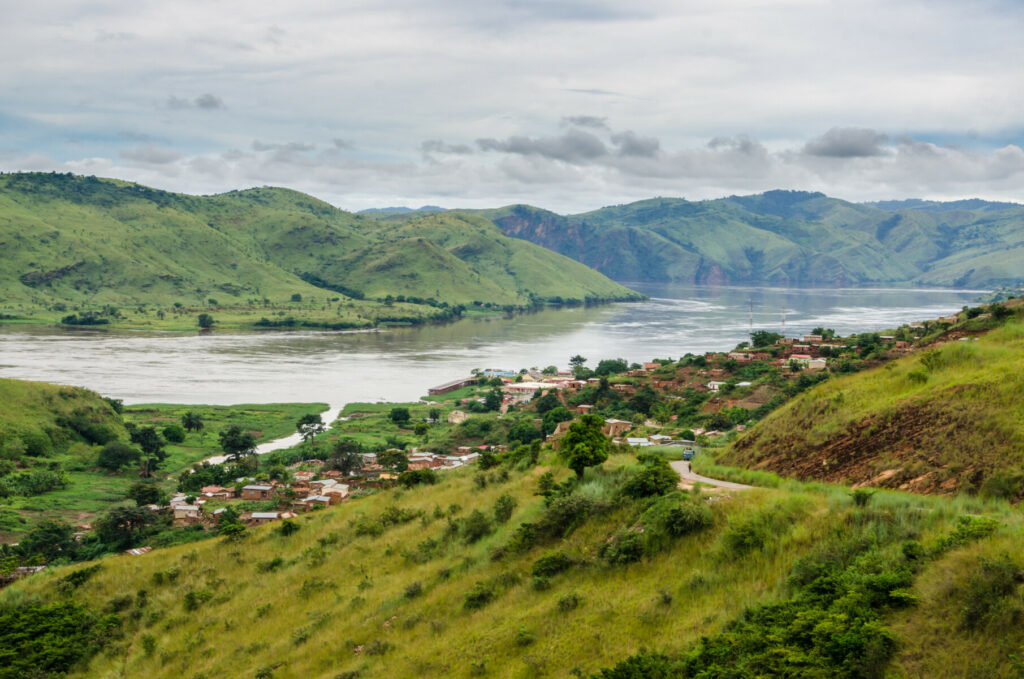
We also offer our Congo, DRC, and Angola Cabinda Tour. This takes you to the country’s dynamic capital, Kinshasa, as well as exploring the neighbouring Republic of the Congo and the unique, seldom-visited Cabinda exclave of Angola.
If you prefer a more personalized journey, we also offer private tours tailored to your interests, whether you’re keen on safaris, historical sites, or cultural experiences.
For more information, contact us directly so that we can help plan your adventure!





